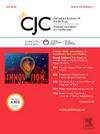心血管医学中的非风化代币。
IF 5.8
2区 医学
Q1 CARDIAC & CARDIOVASCULAR SYSTEMS
引用次数: 0
摘要
将不可篡改代币(NFTs)融入医疗保健领域,尤其是心血管医学领域,代表着一种颠覆性的转变,即增强患者周围电子健康数据的安全性和互联性。NFT 是存储在区块链网络上的唯一数字证书,可将各种健康数据源与其所有者(患者)绑定,并利用智能合约为利益相关者(医疗服务提供者、研究人员)划定访问权限。数据源可能包括来自不同医院、诊所、药房、检验中心和移动医疗设备的电子病历。因此,患者及其医疗服务提供者可以无缝查看诊断、用药、心电图、成像、家庭血压记录,并从这些汇总数据中获得人工智能洞察力。数据不是存储在专有服务器上,而是经过加密并存储在分散的网络上,具有统一的访问点和不可更改的所有权证明,使数据更不易被盗窃或篡改。作为其 NFT 的监护人,患者有动力积极参与健康监测和自我驱动的研究,这些研究符合他们的需求,利用创新市场,他们可以浏览研究、记录其知情同意并将其贡献货币化。此外,他们还能在传统环境或虚拟平台(如元宇宙)中进行自我教育和寻求跨区护理,而 NFTs 则可作为数字护照。尽管前景令人振奋,但在医疗保健领域的应用仍处于起步阶段,伦理和技术方面的限制仍有待解决。本文探讨了这一领域的多方面应用和主要参与者,并概述了以 NFT 为特色、以患者为中心的心血管护理用例。本文章由计算机程序翻译,如有差异,请以英文原文为准。
Nonfungible Tokens in Cardiovascular Medicine
The integration of nonfungible tokens (NFTs) in health care, particularly in cardiovascular medicine, represents a disruptive shift toward enhancing the security and interconnection of electronic health data around the patient. NFTs, unique digital certificates stored on a blockchain network, bind various sources of health data to their owner (the patient) and delineate the access rights for stakeholders (providers, researchers) using smart contracts. Data sources might include electronic medical records from different hospitals, clinics, pharmacies, test centres, and mHealth devices. Accordingly, patients and their providers benefit from seamless visibility of diagnoses, medications, electrocardiograms, imaging, home blood pressure logs, and artificial intelligence-enabled insights from these aggregated data. Rather than being stored on proprietary servers, data are encrypted and stored on decentralized networks with a unified point of access and immutable proof of ownership, making them more robust to theft or tampering. As custodians of their NFTs, patients are incentivized to actively partake in their health monitoring and self-driven research that aligns with their needs using innovative marketplaces that allow them to browse studies, document their informed consent, and monetize their contributions. Furthermore, they are empowered to educate themselves and seek care across siloes in traditional settings or virtual platforms such as the metaverse, where NFTs serve as digital passports. Despite these exciting prospects, adoption within the health care sector remains in its infancy, with ethical and technical limitations still being addressed. In this article we explore the multifaceted applications and key players in the field, and outline use-cases for patient-centred cardiovascular care featuring NFTs.
求助全文
通过发布文献求助,成功后即可免费获取论文全文。
去求助
来源期刊

Canadian Journal of Cardiology
医学-心血管系统
CiteScore
9.20
自引率
8.10%
发文量
546
审稿时长
32 days
期刊介绍:
The Canadian Journal of Cardiology (CJC) is the official journal of the Canadian Cardiovascular Society (CCS). The CJC is a vehicle for the international dissemination of new knowledge in cardiology and cardiovascular science, particularly serving as the major venue for Canadian cardiovascular medicine.
 求助内容:
求助内容: 应助结果提醒方式:
应助结果提醒方式:


